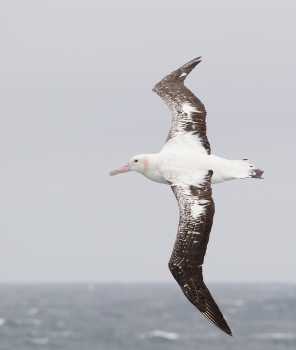Morgan Commins (Percy FitzPatrick Institute, DST/NRF Centre of Excellence, University of Cape Town, South Africa) and colleagues, writing in the journal Antarctic Science, have looked at seabird assemblages south of South Africa in relation to oceanic fronts.
The paper’s abstract follows:
“Oceanic fronts are important foraging areas for many top predators, but they also define biogeographical boundaries to animals in the Southern Ocean and play a role in structuring seabird assemblages. Understanding the factors driving patterns in the spatial and temporal distribution of seabirds is important to infer the likely impact of a changing climate. Latitudinal transects south of Africa in two summers indicate that fronts and sea ice extent play key roles in determining seabird assemblages. We observed 37 seabird taxa and found five seabird assemblages. The Subtropical Convergence and pack ice-edge form the strongest biogeographical boundaries, whereas the Sub-Antarctic Front and Antarctic Polar Front are less well defined. As summer progresses, the Southern Antarctic Circumpolar Current Front (the Antarctic Divergence or southern boundary of the Antarctic Circumpolar Current) becomes important, when a distinct seabird assemblage forms north of the retreating sea ice following an influx of great shearwaters Puffinus gravis (O'Reilly), blue petrels Halobaena caerulea (Gmelin), Kerguelen petrels Lugensa brevirostris (Lesson) and southern fulmars Fulmarus glacialoides (Smith). Seabird assemblages show strong seasonality and are predictable between years. They are structured primarily by latitudinal gradients and secondarily by seasonal variation in sea-surface temperature and ice cover within their latitudinal habitat zones.”

Wandering Albatross. Photograph by John Chardine
Reference:
Commins, M.L., Ansorge, I. & Ryan, P.G. 2013. Multi-scale factors influencing seabird assemblages in the African sector of the Southern Ocean. Antarctic Science doi.org/10.1017/S0954102013000138.
John Cooper, ACAP Information Officer, 27 June 2013

 English
English  Français
Français  Español
Español